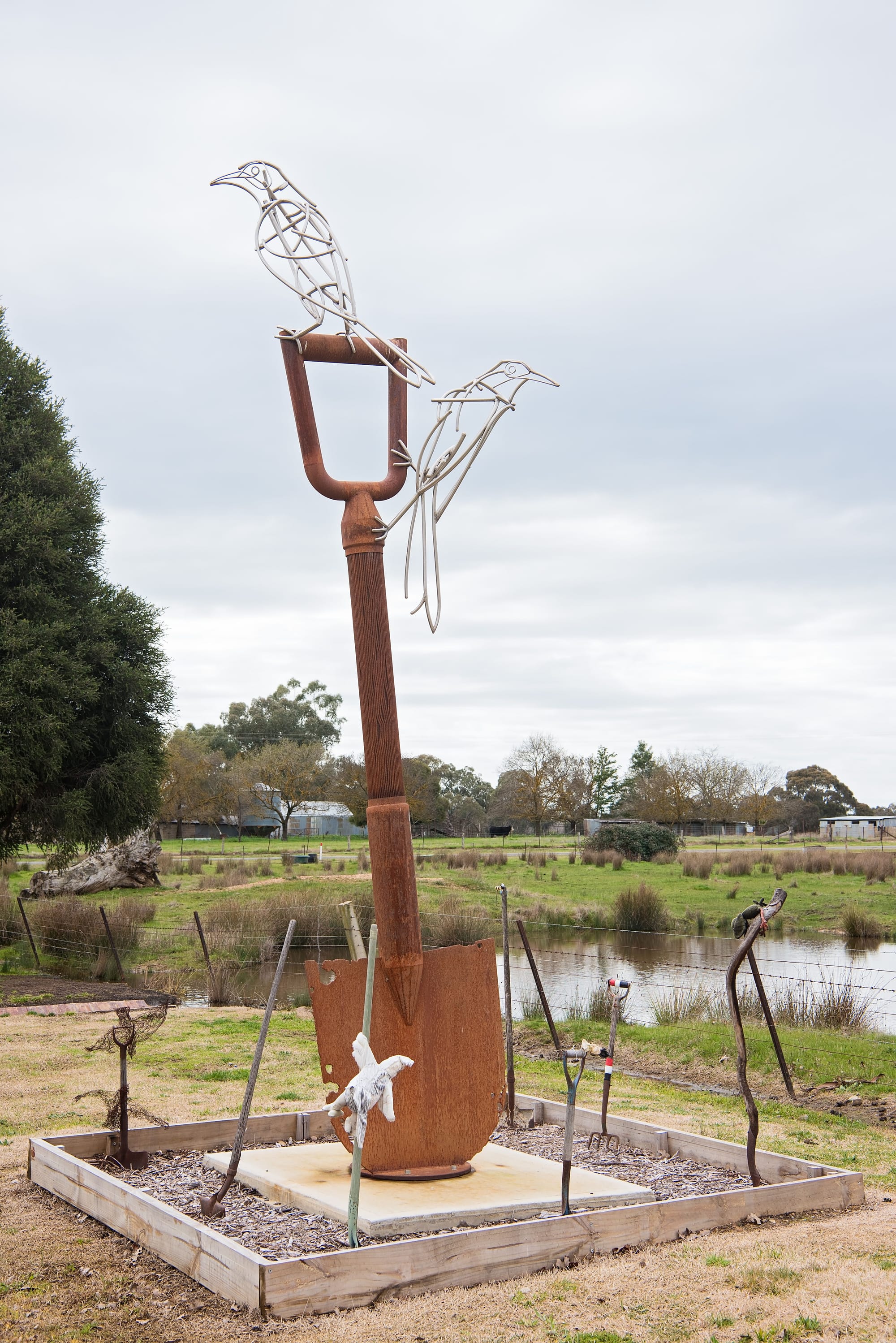THE Miners Shovel stands at the southern entry to Chiltern and at five metres tall, it cannot be missed.
It is the work of Xavier Pinard, who won a competition by the Indigo Shire to find a new symbol for the township.
Serving as a tribute to the town's proud gold mining history, it also features a couple of regent honeyeaters on the handle.
Alluvial gold was first found in 1858 in the Indigo Lead about 3.4 km from the present township.
Within four months there were between 12,000 and 15,000 miners on the field and numbers grew rapidly to over 20,000.
A gold town of hessian and canvas, of sly–grog shops and some 32 hotels was established.
In the same year, the nearby New Ballarat Lead was discovered.
The shopping precinct – Conness Street – was named after John Conness, the man who first discovered gold at Chiltern.
It began as a miner's track adjacent the New Ballarat lead.
Main Street was the route which extended from the Indigo Lead towards Beechworth.
But by 1859 it was all over.
The easily obtainable gold of the Indigo Lead was worked out and the majority of alluvial miners pushed on to other fields.
Some miners remained and in 1859 sank a shaft (now in Chiltern Park) and struck the Chiltern Lead.
A new rush set in until these leads became too deep, and the water too difficult to remove, for the small parties to continue work.
It was then left to the larger companies to recover the deeper gold through the use of better lifting and pumping gear.
Shaft depths of 80m to 150m were common.
Some of the companies which worked the field were Barambogie, Chiltern Valley Consols, Great Southern and Chiltern Valley United, North Prentice, and the Chiltern Scotchman's Company.




